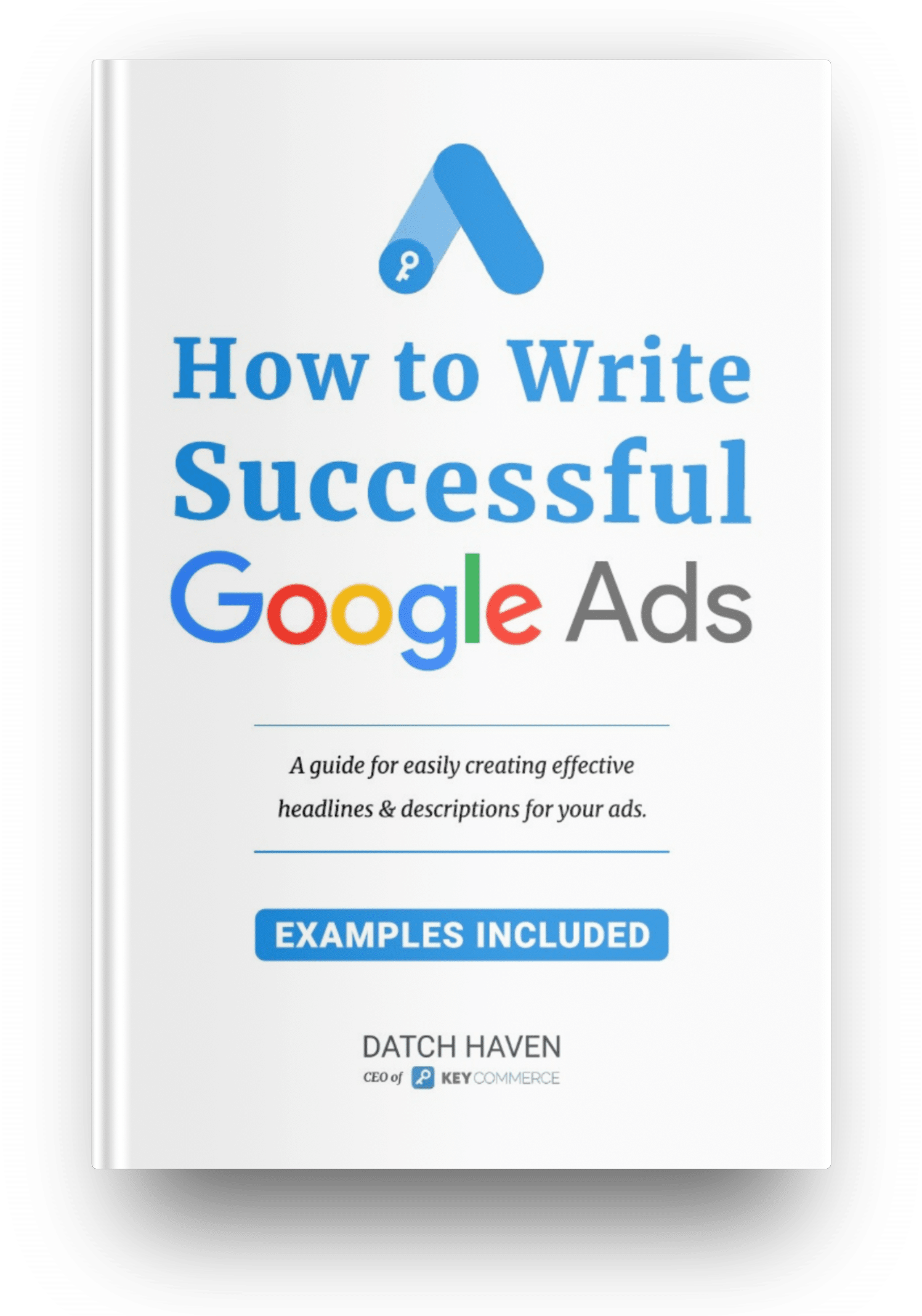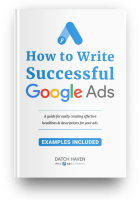What is attribution?
Google Ads attribution reporting aims to analyze the various touchpoints and channels that customers use. It helps businesses understand how customers get to their landing pages and how long it takes them to convert. After the conversion, you need to identify where the lead came from and get some insights into your customer's behavior.
The ad interaction just before a purchase is called the last click. Using only this metric when evaluating what campaigns or campaign types have generated the most conversions is not ideal. If you only record the last click, you may miss crucial information about your customer's steps to get to the conversion action.
The attribution model helps determine which campaign types, channels, and platforms you should credit for sales and conversions. Google Analytics (GA) lets you choose the most relevant reports from various attribution models.
The attribution report
An adequately set up attribution report helps you understand which marketing efforts generate the most impressions, leads and increase sales.
Of course, the data you extract depends on your marketing attribution model. However, it will give you an overview of how the ad groups perform and identify which keywords attract the most traffic.
You'll also see what you should focus on with pay-per-click (PPC) metrics to improve ad performance. Ultimately, the attribution data guides you on where to allocate your marketing budget for a better return on investment in your Google Ads campaigns.
The Google Ads attribution interface
The interface for attribution reporting is easy to use and is found by going to Tools > Measurements > Attribution from your Google Analytics homepage.
Once you're on the attribution dashboard, there are four direct reports and an overview report towards the top, which provides an overall summary. You'll find three drop-down controls on each view in addition to the date range that appears.
The three drop-down controls in the interface are:
- Dimension – From this drop-down, we can see attribution by Network, Campaign, Campaign type, Ad Groups, Keywords, Devices, and even Creative
- Conversion action – The conversion action that is most important or relevant to your Ecommerce business. In most cases, it is the Transaction/Purchases. By default, it will include all the conversion actions you have set as ‘primary.'
- Look-back window – This means for any conversions, how far back in the past an ad interaction can be credited. We can look back as far as 90 days, with 60 days being another option in the middle and 30 days being best practice for the date range . Therefore, the longer the date range is, the more potential touchpoints will be included in the report and vice versa.

The reports in the attribution interface
Overview
The Overview tab summarizes the important metrics within the four following reports (Conversion paths, Path metrics, Assisted conversions, and model comparison), thus providing a high-level view.
Conversion Paths
- The ‘Conversion Paths' report shows the most frequent path taken to complete a conversion, which means the different touchpoints the customers have gone through before making a purchase.
- Using the ‘Dimension' drop-down allows you to view the conversion path in the form of campaigns, campaign types, ad groups, networks, devices, etc.
- If there is ‘x2', customers have had two separate touchpoints leading to conversion. Likewise, when you see ‘x3', that means three individual touchpoints, and so on.

- Additional controls in the top right corner of this report are View paths and view transition paths. By default, the view drop-down shows the path. Changing it to a transition path provides a higher-level view of the conversion path that is easier to understand. From the two screenshots below, the first one shows two lines at the bottom, Mobile x2, and Desktop x2. By selecting the transition path, all the different lines for the same device type get consolidated into one line, as shown in the 2nd screenshot.


- Once the view has changed to ‘transition paths,' you can see the conversions and conversion value for each device individually, as well as those who have used multiple devices before making a purchase, such as ‘Mobile > Desktop' and ‘Desktop > Mobile.'
Path Metrics shows two key metrics
There are two key metrics that are used in the Google Ads attribution reports that are crucial for decision making.
The time taken (in days and hours) from the initial exposure and interaction with the ads to a conversion.
- Additional controls within the Path metrics reports are Measure from (option to choose either from the first or last interaction) and Measure in (option to choose either in days or hours) We recommend using from first interaction as best practice to a better view of the conversion path
The number of interactions taken for conversions to happen.
- Here users are able to see the number of conversions and conversion value generated within 1,2,3,4 or more interactions.
- Depending on the product, although most conversions might occur within a single interaction, this report helps you understand your customers' purchasing behavior and what percentage of your customers purchase after more than one interaction.
- If less than 50% of your customers purchase after a single interaction, you can work on stronger messaging, better offers, or improve your landing page conversion rate.

Assisted Conversions
- The attribution report shows how often a specific campaign, campaign type, network, device, or other dimensions assist conversions. Therefore, for any particular criterion, we can see all the interactions that helped in conversions except the last interaction immediately before conversion.
- Unlike the other reports, the dimension drop-down within the ‘Assisted conversions' data allows you to see the performance of multiple dimensions together in the same view by clicking on the checkbox next to it instead of having to select just one criterion at a time.
- While looking at this specific Google Ads report, the primary intention is to see which campaign, campaign type, network, device, or other dimensions assist conversions, even if they didn't generate the last-click action. This report, along with the assisted conversions, also shows the last-click conversions for the chosen dimension.
- As shown in the screenshot below, ‘Click and view assists' and ‘Click and view assists value' are the non-last click conversion action and conversion value' resulting from each campaign type.
- From our example below, we can see that the Shopping campaign type resulted in fewer last-click conversions than the search but significantly assisted in more conversion action than the search. The ‘Assists/Last click conversions' metric shows the ratio of assisted and last click conversions. When the number is greater than one, it shows that the chosen dimension assisted in more conversion action than actually generating conversions.
- These great metrics can help you decide whether to keep a campaign running, even if you're not seeing your desired results from a specific campaign or campaign type. For instance, brand awareness or video view campaigns may not result in last-click conversions but most likely have played a significant role in assisted conversions.

Model comparison
- The model comparison report shows how changing to different Google Ad attribution models such as last click, first click, linear, time decay, position-based, and data-driven can impact your conversions reporting for the selected dimensions. Therefore, with this report, you can compare two different attribution models. You can use it to see any changes in conversion reporting before you update the attribution settings for your conversion action.
- The screenshot below compares the last-click model with the data-driven model. We can see that for the search campaign type, this change will cause it to lose 9.74% of conversions while the cost rises by 10.79%. At the same time, the Shopping campaign type's conversion has increased by 9.97% while the cost has decreased by 9%.
- Technically, we are not losing or gaining any conversions from the account level. The number of conversions at the account level is still the same; the only difference is that they are being attributed to different campaign types (or the selected dimension). If you add all conversions from the last click column, you will see the final number matches the one you will get by adding all the conversions in the data-driven column. In this case, the last click and data-driven column would result in 21,114 conversions.

A handy tool
If we had a crystal ball, we could effortlessly determine what our customers want and how to best present it to them for optimized sales. By using Google Ads attribution reports, we come close, but only after we see some conversions.
We can use the data provided to enhance our products and website for future users and constantly improve the experience, thereby increasing conversions.
In a nutshell, attribution reporting gives you more insight into your customer's purchase journey so that you can make more informed decisions regarding your marketing budget and where to allocate it.












